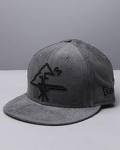There are five basic instruments needed for an accurate record of the weather. A rain gauge, anemometer (wind gauge), thermometer, barometer and weathervane.
1.Rain gauge. These come in all shapes and sizes from a basic glass jar with incremental measurements on the side, to a wireless rain gauge which can be placed anywhere in your garden and remotely records data such as current rainfall total, current rainfall rate per hour and daily, weekly or monthly totals. They can also be self-emptying allowing you to measure large precipitation amounts over a period of time.
2.Anemometer (wind gauge). This is a device used to measure the speed of the wind. Its most basic form is a cup-anemometer consisting of four hemispherical shafts mounted horizontally to each other on a vertical shaft. Anemometers can be split into 2 broad groups, hand held and fixed. A fixed wind gauge can measure the wind speed at a given location, and also can provide historical measurements such as average wind speed and maximum gust. A hand held anemometer meanwhile will generally just display the current wind strength, however is extremely flexible as it can be carried anywhere so you can measure the wind speed at the coast or on the top of a mountain.
BAROMETER MERCURY
3.Thermometer. These devices of course measure the temperature. Thermometers have progressed a huge amount since the days of a simple mercury thermometer. Now wireless is all the rage, and from the comfort of your favourite armchair you can check the current, maximum or minimum temperatures and have it displayed in °C or °F. So if you are a keen gardener you will be able to judge how cold it is outside and decide whether or not to cover your more sensitive plants.
4.Barometer. Now barometers measure the atmospheric pressure and again can be used to see if the pressure is rising or falling or steady, providing a good indication of the near future weather. However barometers are so much more than a weather instrument, they can be a work of art. Ornamental barometers grace the walls of many a home, and I can remember as a child tapping our barometer every day to see if the pressure was changing and if the weather was going to be 'fine' or 'stormy'. Of course technology has caught up with air pressure too, so digital barometers are widely available and, as in the instruments above, can be used to measure atmospheric trends aiding in a more accurate picture of the coming weather.
5.Weathervanes. Quite simply the weathervane measures which direction the wind is blowing from. A key component to any weather forecast. But, as with a barometer, they can also be an aesthetical addition to your garden, or roof top! There is now an almost unlimited range of designs ,the more popular styles including animals, birds, sports and many others. It is also possible to have your own hand crafted, designer weathervane.
All these weather recording instruments are widely available as individual units or bundled as a weather station. Whatever your reasons for recording the weather, be it as a hobby or as a necessary part of your profession, enjoy the weather whatever it throws at you!











